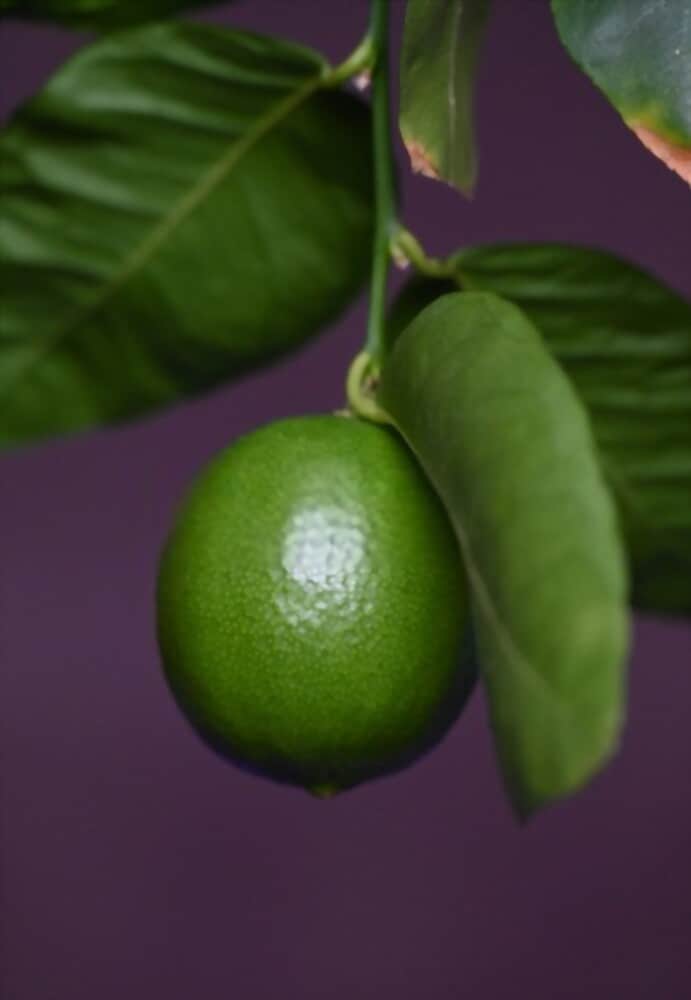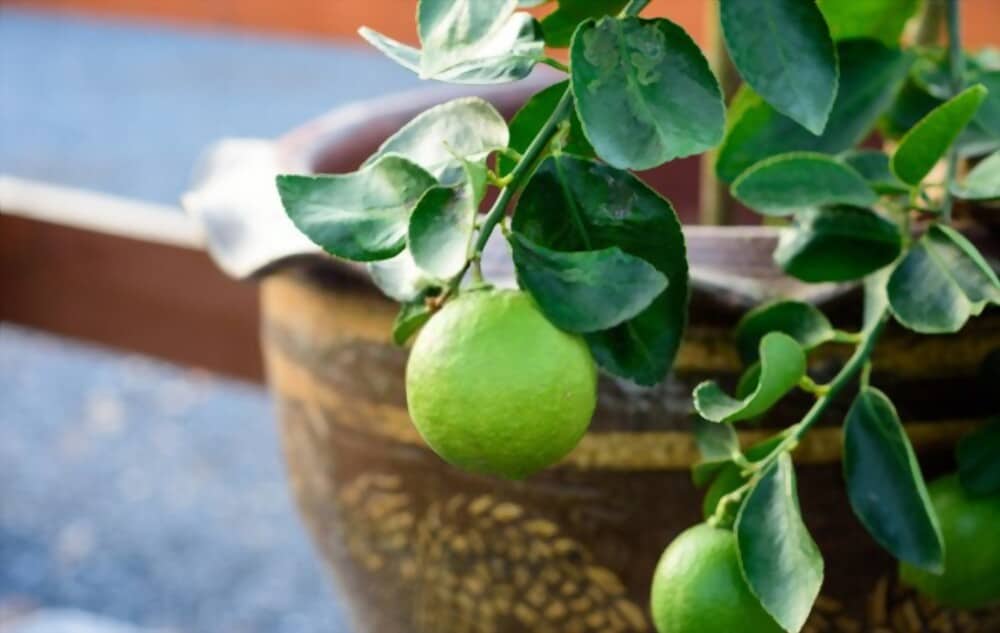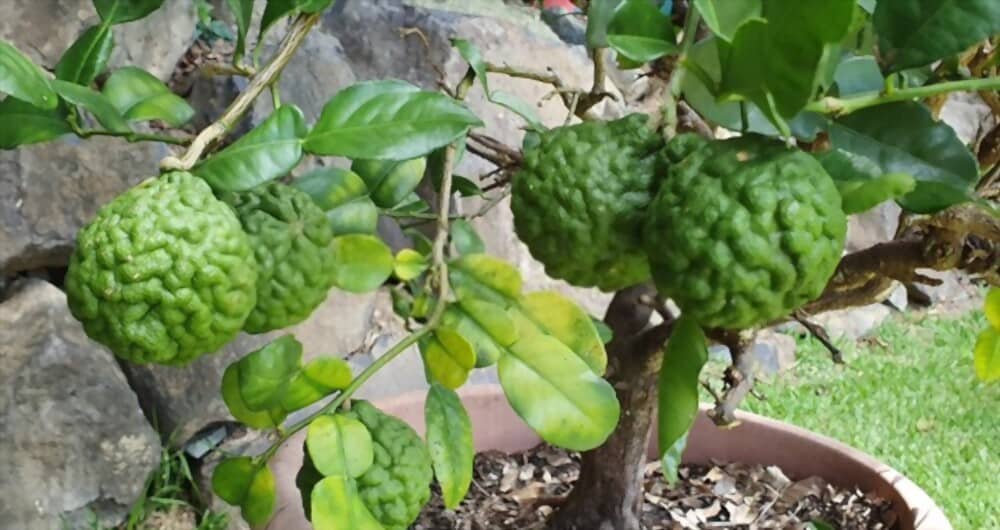When there is not enough room for them to be planted directly in the ground, key lime trees can be cultivated in a bucket or a sizable plant pot. Having them in pots has the benefit of allowing you to grow the plant indoors, on a balcony, or even on a porch.
Planting key lime trees in a bucket or plant pot promotes healthy growth. Despite the restricted setting, the plant can grow given the soil and sufficient nutrient supply. Since the plant doesn’t have a wide canopy and can produce fruit much like a tree placed in the ground, a key lime tree in a pot can be simply handled inside of a bucket.
Key lime is a plant that belongs to the Citrus genus and is grown in tropical and subtropical regions. The fruit of citrus trees native to the tropics called limes (Citrus aurantifolia) is closely related to lemons.
Evergreen Key Lime trees can reach heights of up to eight feet in the ground and three to five feet when grown in a pot or bucket. Oftentimes, the branches are thin and slender with 5mm to 10mm thorns, which as they mature, grow hard and thorny.
When citrus trees are grown in buckets or pots, their size does not increase as much as it would if they were grown outdoors. The majority of tree roots are found in the soil’s upper 6 to 18 inches. Therefore, while planting the plant, a container with a diameter of 16 to 24 inches or more should be utilized.
There are numerous advantages to growing citrus trees in pots, but there are also some important factors to take into account, such as nutrient addition, watering, temperature considerations, and pest control, which we will go over in more detail in this post.
View photos of this exact tree two years after it was repotted into a bigger container at the bottom of this post.
Table of Contents
Key Lime History in Florida
Key lime pie comes to mind when we hear the word. This is due to the fact that Florida is frequently and rightfully connected with the well-known dessert known as Key Lime Pie.
Up until the mid-1920s, when natural calamities took a high toll and destroyed the citrus groves, key lime was farmed commercially in the state before the 1920s.
The Persian lime stepped in to save the Key Lime industry after it collapsed.
It’s possible to confuse the key lime with its cousin, the Persian lime, a hybrid, seedless variety that you can find in your neighborhood store. Early in the 20th century, the Persian or Tahiti lime (Citrus latifolia), which is bigger than the Key lime, was produced. When completely ripe, Persian and key limes both turn yellow.
| Considerations for Planting | Ideas for Growing the Best Key Lime Plants |
|---|---|
| Pot Size | To account for roots, use rather sizable pots. pots with holes at the bottom with a diameter of 16 to 24 inches. |
| Soil Structure | Utilize a nutrient-rich soil blend that is well-aerated. As a general fertilizer, citrus fertilizers like Citrus-tone can be utilized. |
| Planting Conditions | Plants should be positioned in the middle of their containers with at least 2 inches of dirt covering their roots. |
| Fertilization Times | Fertilize plants three months in advance of, and three months after, blossom and fruit production. It is possible to use liquid fertilizer sporadically. |
| Watering Periodicity | Depending on the soil type, container size, weather, and plant size, plants need to be watered. |
| Animal Control | Use Neem oil, which has a biological control, or cloth and rubbing alcohol, which has a mechanical control |
| Harvesting | While plants developed from seeds can take three to five years to bear fruit, grafted plants will bloom after just one year. |
How Long does it take for Key Lime to Grow?
It takes 35 years for trees grown from seedlings to bear fruit.
Around age 8, they reach their maximum yield. Trees grown from cuttings and air layering, on the other hand, bear fruit considerably more quickly, sometimes even a year after planting. Starting to flower takes about 10 months.
The white, five-petalled flowers that are produced can occasionally cover the entire canopy.
Because key limes are self-pollinating trees, they don’t need other key lime trees to nourish their blossoms. Bees and other insects therefore play a crucial part in the pollination of the flowers, and two weeks later, little lime fruits may be seen emerging from the flowing places.
Before the fruits are ready to be harvested, it can take them anywhere from a month to two. Lime fruits can be picked when they are fully ripened and completely green or when they are entirely yellow.
You will receive more juice from the fruit if it is more yellow, but the citric acid’s potency may be a little lower.
Can you Grow Key Lime from a Seed?
The seeds must be kept moist until they can be planted because if they are allowed to dry out, they will not germinate. When growing plants from seeds, the seeds should be kept in storage for at least 56 months before being planted.
When completely matured, the typical Key lime fruit yields 5 to 10 seeds.
Additionally, grafting and air layering procedures can be used to propagate plants. By taking a clipping from a known healthy productive key lime tree and grafting it onto another smaller tree, this can occasionally be done to maintain a pure strain of the key lime plant.
Environmental Conditions for Key Lime to Grow
Frost is more likely to affect Key Limes than other citrus fruits. As a result, growing them in buckets is particularly practical because the plants may be moved or protected from the cold.
Key limes are a year-round fruit, with the exception of frost restrictions, as the tree typically produces fruiting flowers at least three times annually.
The growth of the lime tree depends on the environment and the maturity of the fruit. While potted key lime trees can be planted year-round in warm tropical climates, temperate climates benefit from planting in late winter or early spring.
Key lime trees thrive in conditions with temperatures over 60°F, full sunlight, well-drained soils, and good air circulation. It would be effective to simulate near-tropical conditions, which would result in productive, healthy trees.
Watering Requirements for Potted Citrus
In terms of key lime plants, watering is crucial. Watering should be given to the plant every three to four days. You might need to water more frequently depending on the pot or container you’re using.
Another aspect to take into account when watering is
- Pot size
- The weather that the plant experiences
- utilized soil type
- The plant’s size in the container
Since key limes prefer loose, aerated soil, water tends to drain right out of the soil after watering in this type of soil. Consequently, you might need to water a little more frequently if you use this sort of soil.
Furthermore, if the plant is located in a region that receives sufficient rainfall, this may be advantageous to the plant. A risk with excessive rain is that it will wash through the soil and bring with it the nutrients that the plant needs to flourish.
When it comes to watering your Key lime plant, it is best to keep an eye on the soil and determine whether it requires watering or not. Typically, plants need to be watered when the top 1 to 2 inches of soil appear dry.
When keeping track of the soil’s moisture, a moisture meter can be very helpful in determining when to water the plant.
A skewer can be inserted into the ground, pulled out, and the moisture content measured. This approach is less expensive and, in certain situations, more accurate for gauging soil moisture.
Nutrient Requirements
When plants are in pots, the only nutrients they receive are those you give them. You may not need to fertilize the soil for a while because the potting soil initially contains enough nutrients for the plant to grow.
However, as the plant becomes older, it will usually tend to eat up the initial nutrients, necessitating the addition of additional fertilizer to the pot or bucket.
Citrus-tone, a fertilizer made especially for citrus trees, is an excellent option because it offers all the nutrients needed for growth and fruit production.
Ordinarily, fertilizer should be added as directed on the package, both before and after the plants start to produce blooms and fruit. The plants are fertilized using this method once every three months.
Pest Control for Key Lime Trees
Spider mites, mealybugs, and leaf crawlers are among the pests that can harm key lime plants. These insects can wreak havoc on your plant and finally kill it if they are not controlled.
Neem oil, which is sprayed topically into plant leaves, is the greatest organic pest control method available. If insects are already attacking the key lime tree, this will get rid of them and keep any more from getting too close.
Mealybugs can be readily eliminated by wiping them off with a tiny cloth dipped in rubbing alcohol.
The mealybug infestation on my tree was so bad that I had to nearly completely remove all of the limbs, and even then, you could hardly tell it was a key lime tree.
Fortunately, citrus trees are tough, and after a week or two, they began to grow new shoots and branches.
An update following the passage of two years
With this one tree, I can easily produce 10 to 20 Key limes per month.
Benefits –
- It is practical.
- I can move the pot wherever I like.
- Year-round, the tree yields limes.
So I can confidently declare that cultivating a potted key lime tree is completely worthwhile.
FAQ
How often do lime trees produce fruit?
Within a year of planting, key lime trees grown from cuttings or air-layers may start bearing fruit. In contrast to seedling trees, which take a further year or two before bearing fruit, budbed and grafted trees often produce fruit within three years. The annual fruit production of strong, mature trees can range from 30 to 50 pounds (13–23 kg).
How big do potted lime trees get?
Although your tree may appear little when you purchase it, most container citrus trees eventually grow to be close to 6 feet tall, even with dwarf varieties and frequent pruning.
Where is the best place to plant a lime tree?
To take advantage of the house’s protection from the cold, lime trees should be planted in the yard on the south or southeast side of the building. The trees should be placed in full light for the best growth and output.
Do lime trees need full sun?
Like all citrus trees, lime trees are best grown in containers with lots of sunlight and moist, well-draining soil. A place with at least eight hours of direct sunlight is preferred.



